Find out what the propagation and garden teams have been up to this week.
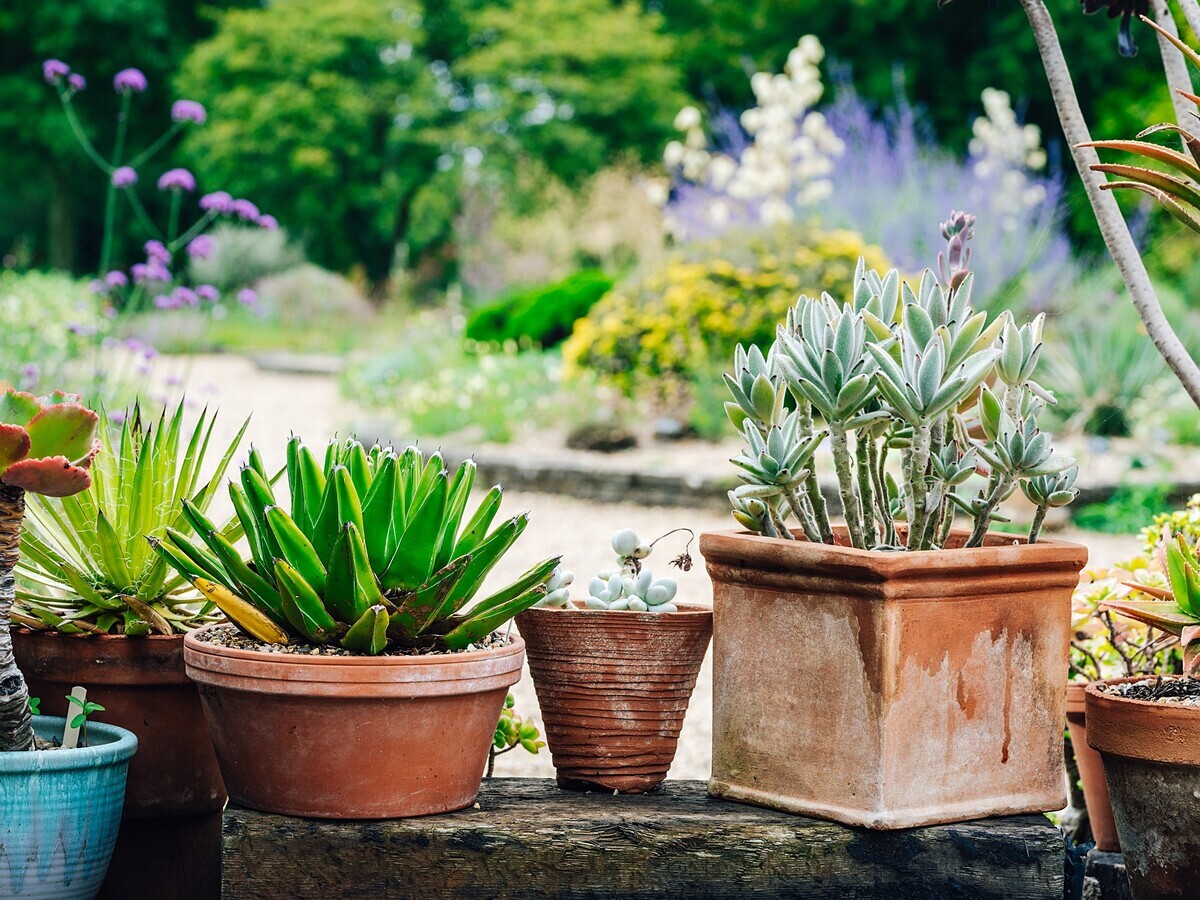
Container gardening

Even the smallest of spaces can be transformed by the addition of a few containers with plants; pots also make an excellent choice when your space doesn’t allow for plants in the ground and can offer flexibility to swap and change your displays around.
Hardy perennials make an excellent choice for containers, often requiring less water and feeding than bedding plants. As long as they’re given good drainage and the winter isn’t too severe, many will reward you by returning year after year.
Right plant, right place
For a sunny spot Erigeron karvinskianus, Verbena officinalis var. grandiflora ‘Bampton’ and Oenothera lindheimeri (syn. gaura) are hard to beat when it comes to abundant flower displays. For shade, the golden form of Hakonechloa macra, planted in a tall pot where the foliage can spill down the sides, makes a lovely focal point. It can also be teamed with blue-leaved hosta to great effect. The delicate white flowered Fuchsia ‘Hawkshead', its petals tipped green, and the rose-pink ‘Whiteknights Pearl’ are useful old favourites and ideal for lightening up a dark corner, often flowering even after being touched by light frost.
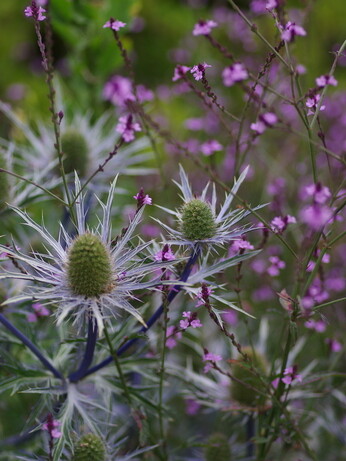
Verbena officinalis var. grandiflora ‘Bampton’
and eryngium
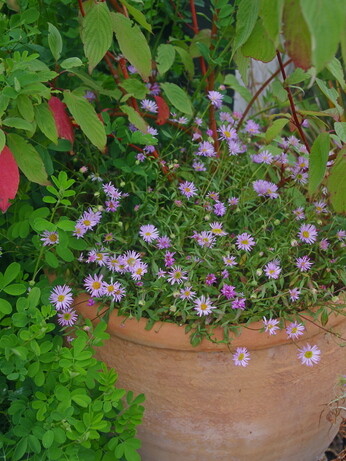
Erigeron karvinskianus 'Lavender Lady'
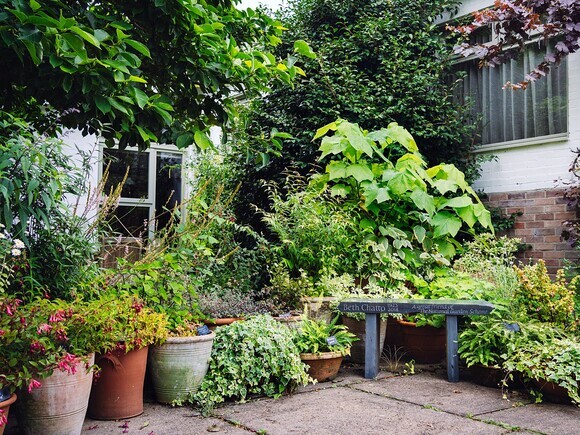
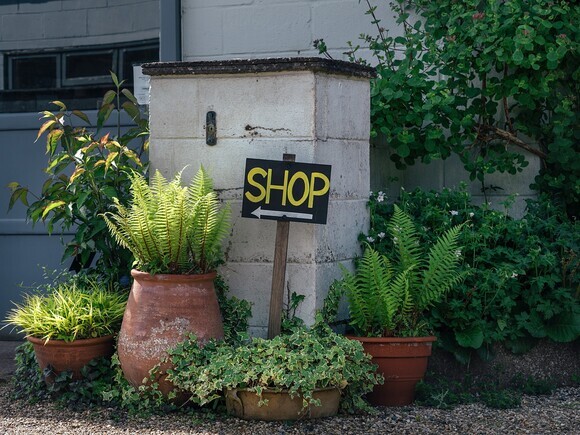
Most culinary herbs are also suited for containers. Keeping a pot or two near the backdoor for convenience makes harvesting so much easier. Origanum, sage and thyme thrive in a sunny spot while parsley can be grown in partial shade.
Caring for container grown plants
Caring for your container garden during a heatwave can prove challenging, especially when trying to be water-wise. A short term solution can be to relocate the containers to shadier conditions or protect struggling plants from the intense midday heat by using a parasol or horticultural netting. Container grown plants will always need a bit of extra care as their roots heat up and cool down more quickly compared with those grown in the ground. Just as you would when choosing plants for a border, it’s critical to pick your plants wisely and consider factors such as sunlight and wind exposure, but also think about how much water they’ll need.
Urban planters
Recently we’ve been trialing a range of drought-resistant plants in large containers, experimenting with different growing media (including pure sand) to see how the selected plants fare with minimal watering and build on our plant range for urban public schemes where limited maintenance and irrigation are common issues.
As a general rule, larger containers are preferable to small ones, as the latter dry out more quickly. The exception being plants with shallow root systems, such as most succulents, that are prone to being overwatered if grown in a container that’s too large.
Find out more HERE
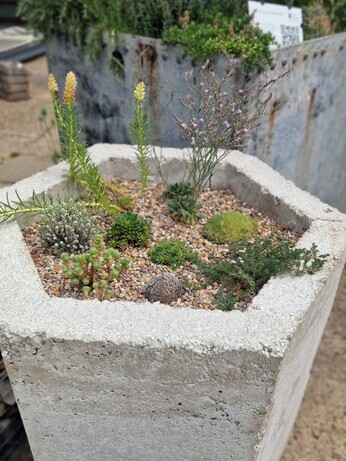
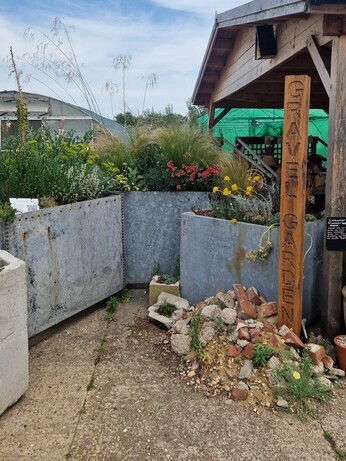
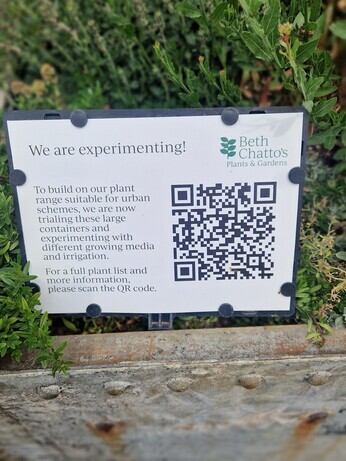
Watering
How often to water will depend on various factors such as type of compost used (some tend to retain moisture better than others), aspect, the microclimate in your garden or outdoor space, and how thirsty the plant is. Watering should only be done when the plant needs it, as overwatering can lead to root rot, and preferably before they start to show signs of stress. Push your finger knuckle deep into the soil and if the top inch feels dry it’s likely time to water. Generally, our pot displays of tender plants are watered once or twice a week during the summer months, and sometimes an additional time when the weather is scorching hot. For smaller containers this might not be enough; they might need watering once or even twice a day, especially if they’re sitting in full sun and the weather is hot. It might sound obvious but always water at soil level, around the base of the plant, where the water can be absorbed. A mulch of gravel or stone (ideal for succulents), or crushed bark, can significantly help reduce evaporation and retain moisture in the soil.
Saucers placed beneath the containers help avoid wasting water, ensuring the plants can soak up any run-off which has trickled down the inside of the pot without properly wetting the soil. Of course, one needs to keep an eye on the plants and tip out standing water, especially if the weather turns wet, so the roots do not rot.
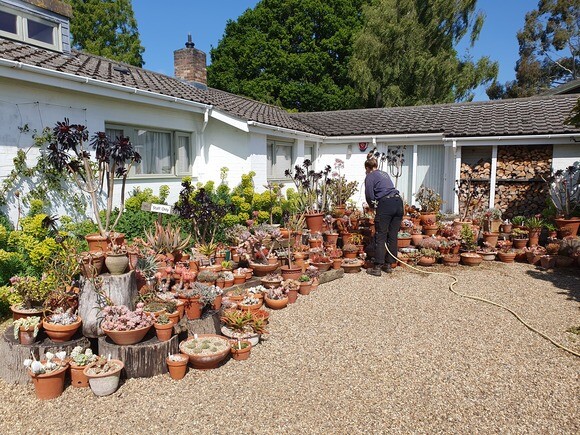
Water early in the morning or, if that’s not possible, in the evening but not during the heat of the day to avoid the water evaporating before it has a chance to reach the roots where it’s needed. Watering at night can increase the risk of fungal diseases, to which some plants are more susceptible, so take extra care to keep the foliage dry.
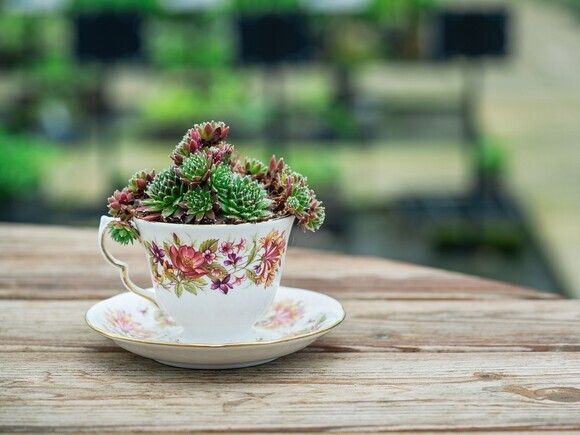
Beth's pot displays
Beth enjoyed making what she called pot gardens: seasonal displays near the house, in easy reach of a hosepipe, where she could enjoy her ever-growing collection of pelargoniums, fuchsias, succulents and other treasured tender plants. She would start by arranging the empty pots, of various heights and sizes, into large groups before filling them with her favourite plants. Her approach was exactly the same as when designing a new border; always selecting plants that would offer more than just attractive flowers, favouring those with interesting leaf texture, colour or form. Pelargonium ‘Frank Headley’ with its mass of salmon-pink flowers was frequently relied on for adding splashes of colour, while the trailing stems of silver-felted Helichrysum petiolare and ivy-leaved pelargonium knitted neighbouring plants together.
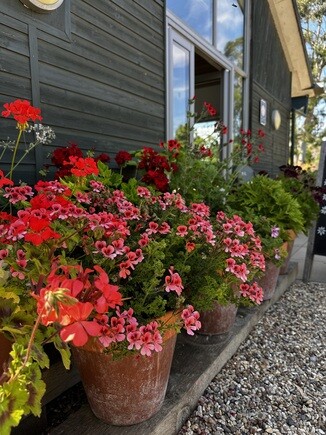
“I think you need to take care with colour schemes among your pots as you would in a border. The problem is not always that certain colours clash but that sometimes too much colour may be strident where a touch would create sparkle. Most important, I find, are the foliage plants chosen to calm or harmonise startling combinations.”
Beth Chatto, Garden Notebook
I remember the first time I was allowed to help create one of those displays, a task usually only entrusted to a handful of experienced staff. Beth would appear intermittently to check on progress, asking for small tweaks to be made or for something to be taken away. There was a sunny corner below one of the bedroom windows to be filled with pelargoniums and agaves. I overheard Beth calling out “Please be careful!” to the person tasked with hauling an enormous, sharp-tipped agave down the patio steps. 'Not to worry, I’m wearing long sleeves to protect my arms' they reassured her. A brief silence followed before a nonplused Beth quipped 'I meant be careful not to damage the plant!' Spoken like the true plantswoman she was.
During the last few years of her life, increasingly bedbound, the pots would be arranged so that Beth could enjoy them from her bedroom window. She would always sit and watch while the display was being laid out. Every now and then there would be a sharp rap on the window; Emily and I would take turns to dash inside to receive instructions on which pot needed turning a fraction this way or moving slightly that way. Even to this day I half expect a knock on the window whenever I’m in the vicinity of the patio.
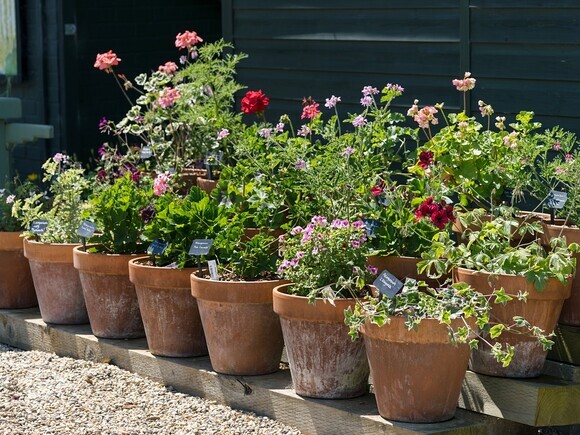
Pot displays today
The pot displays still remain an important fixture at Beth’s, now with emphasis on drought-resistant plants as we’re mindful of water use. In autumn, before the first severe frost descends on the gardens, all the succulents and pelargoniums are gathered up and given a quick tidy before being brought inside the little greenhouse adjacent to the Scree Garden, where they’re will be kept frost-free until spring.
For more ideas of grasses, ferns and perennial suited for containers see:
Written by head gardener Åsa



COMMENTS